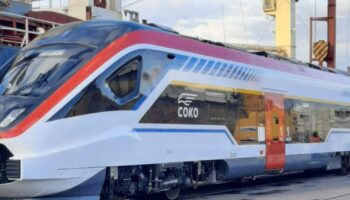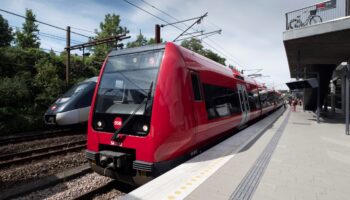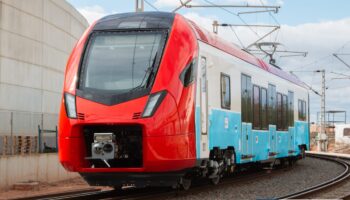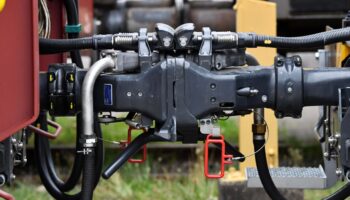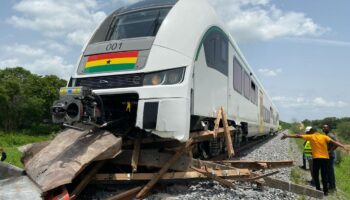Elon Musk presented the idea of high-speed transport in a vacuum tube in August 2013. Just ten years later, in December 2023, Hyperloop One, one of the main companies that decided to make it happen, was forced to cease operations because no one wanted to order an operating system. Nevertheless, other start-ups around the world continue to develop the concept of transporting passengers and cargo in a vacuum tube. This year, China reported the successful testing of a pod on the longest test track in the world.
Story of Hyperloop One
In December 2023, Bloomberg reported the closure of Hyperloop One. According to the news agency, the company has laid off all remaining employees since 31 December, closed its Los Angeles office and is selling its assets, including the test track outside Las Vegas. The intellectual property has been transferred to Dubai-based DP World, which has owned a majority stake in Hyperloop One since 2016. Representatives for both companies declined to comment.
Hyperloop One was founded in 2014, a year after Elon Musk unveiled the idea of using magnetic levitation in a vacuum tube to transport passengers and cargo at speeds of up to 1,220 km/h. The company has managed to raise more than $450 mln since its founding and built a test site near Las Vegas in 2017. Inside a tube 500 m long and 3.3 m wide, the prototype pod was able to accelerate to 310 km/h. Hyperloop One was the only company to carry out tests with passengers at speeds of up to 172 km/h.
The company developed several commercial routes around the world, but was unsuccessful. In February 2022, Hyperloop One announced that it would focus exclusively on freight transport and cut its workforce in half, and also failed to attract investors.
Projects in other parts of the world
SpaceX, the company of Elon Musk himself, was also developing hyperloop technology, but it faded before Hyperloop One. In 2015, his company announced the Hyperloop Pod Competition, which it sponsored between 2017 and 2019. Participants, student and non-student teams, developed sub-scale prototype pods and tested them in a 1.5 km long and 1.8 m wide test tube, built especially for them in Hawthorne, California. There, a team from the Technical University of Munich set a speed record of 463 km/h. However, SpaceX later lost interest in the project and the test tube was dismantled in 2022.
Hyperloop Transportation Technologies, a US-based start-up, built a full-scale prototype of the vacuum transport system in Toulouse, France, in 2018. The 5 t 32 m long passenger pod travelled in a 320 m long and 4 m wide test tube, but it is unclear whether any pods have been tested in it. In May 2023, the company was awarded an €800 mln contract in Italy to develop a comprehensive line between Venice and Padua, with a linear distance of 35 km between the two cities. The company is now implementing the first phase of the project, the feasibility study.
 Presentation of the Hyperloop Transportation Technologies prototype pod in Barcelona, March 2023. Source: HyperloopTT
Presentation of the Hyperloop Transportation Technologies prototype pod in Barcelona, March 2023. Source: HyperloopTT
Several other start-ups are continuing research in Europe. The German start-up TUM Hyperloop built a 24 m long and 4 m wide test tube near Munich. The first demonstration run of the prototype pod with passengers took place on 10 July 2023. The safety of the tube has been confirmed by the independent expert organisation TÜV SÜD. It checked compliance with the relevant safety standards for vehicles and the world’s first standard for Hyperloop systems, which defines the basic safety requirements for planning, construction and operation.
 Opening of the TUM Hyperloop test track near Munich. Source: TUM Hyperloop
Opening of the TUM Hyperloop test track near Munich. Source: TUM Hyperloop
Later this year, the Dutch start-up Hardt Hyperloop plans to begin testing its prototype super-fast pod at the European Hyperloop Centre in Veendam, the Netherlands. The 420 m test track is designed to test passing curves and switching routes and is available to other Hyperloop developers.
Last year, Hardt signed a memorandum of understanding with the Spanish start-up Zeleros. The latter is now testing the use of Hyperloop technology to move cargo along a 20 m demonstration track in the port of Sagunto, Spain. In the future, the track could be extended to 100 m.
 Building of the European Hyperloop Centre in Veendam, the Netherlands. Source: Hardt
Building of the European Hyperloop Centre in Veendam, the Netherlands. Source: Hardt
Before all these tracks were built, Swisspod Technologies announced the construction of a 120 m long test track in Lausanne in July 2021, but only completed the development of the prototype pod two years later. The track is reportedly to be 40 m in diameter to allow the testing of pods of different sizes.
In North America, the Canadian company TransPod was founded in 2015. Seven years later, it was reported to have approved a preliminary plan for the construction of a vacuum line between Edmonton and Calgary, with a linear distance of 280 km between them. Investments of $550 mln were expected from the British investment fund Broughton Capital Group and the Chinese state-owned trading company CERIECO. In July of the same year, the company unveiled a small-size prototype pod. It is known that TransPod planned to build a test track and complete the research part of the project by 2024, but the last official news is dated early 2023.
The Polish start-up Nevomo stands out from the crowd. It is working on a hybrid solution that combines the Hyperloop vacuum tube technology with the MagRail magnetic levitation system. This solution is also compatible with traditional railway lines. In 2023, Nevomo tested a magnetic cushion bogie and an autonomous platform car with a linear motor.
Industry association and China’s own way
After many years without serious progress, an industry association was set up in December 2022 by Hyperloop One, Hyperloop Hardt, Hyperloop Transportation Technologies, Nevomo, TransPod, Swisspod Technologies and Zeleros. The association announced its intention to work with the European Commission, the European Parliament, and the manufacturing, academic and research sectors to develop and promote vacuum transport technology. However, in a year of activity, the Hyperloop Association has only published one official news item in October 2023. It was about a meeting with representatives of the European Commission, who have so far only welcomed the creation of a new association.
The most fascinating of the existing projects is T-Flight, which is being carried out in China under the leadership of the China Aerospace Science and Industry Corporation (CASIC). So far, the T-Flight pod has reached 623 km/h in prototype tests. In November last year, the first phase of the two km test track in Datong was completed, making it the longest of its kind in the world.
About the T-Flight project. Source: CGTN
Earlier this year, CASIC reported successful tests under non-vacuum conditions, with speeds exceeding the specified value. The corporation is considering the construction of a T-Flight pilot line between Shanghai and Hangzhou (165 km). These activities are in many ways a continuation of what China has already done in the field of high-speed maglev trains.










